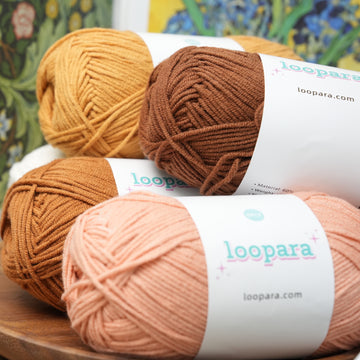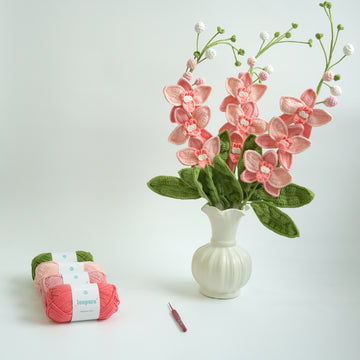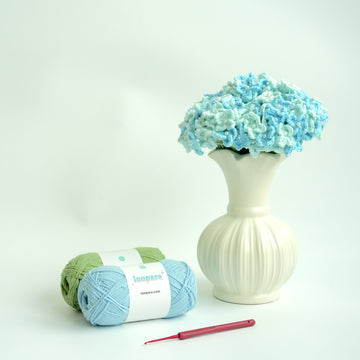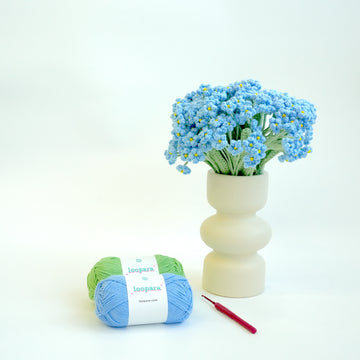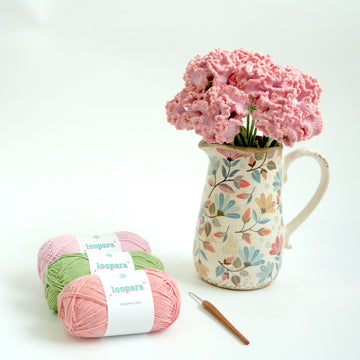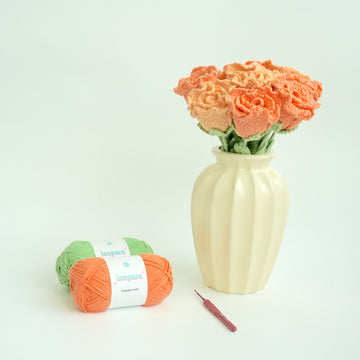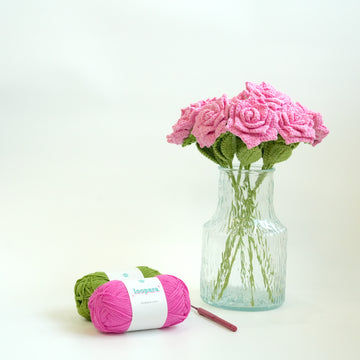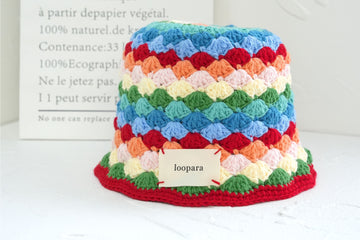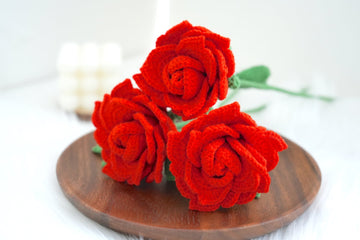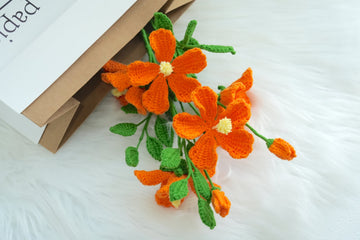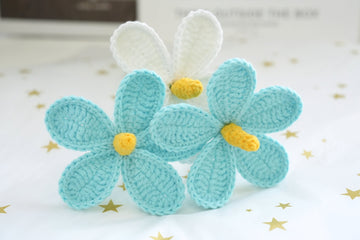A crocheted blanket is a beautiful and useful gift – whether for a loved one or yourself! But just how much yarn does it take to crochet a blanket?
The answer, of course, depends on how big you need your blanket to be. But it also depends on the type of yarn you want to use, and on your crocheting style and stitch type.
We’ve put together a chart to help you get the right amount of yarn for your project. And we’ll also share some handy hints and tips to help you get the best possible estimate.
Factors that determine how much yarn you need
Before you can decide how much yarn you need, you need to know the answers to two key questions:
- What kind of blanket are you making? A blanket for a newborn baby, for example, will be much smaller than one for an adult. And it won’t require anywhere near as much yarn.
- What kind of yarn do you want to use? The thickness of the yarn will also affect how much of it you need. The bulkier the yarn, the less yardage you’ll need to get a blanket of the same size.
The easiest way to know how much yarn you need is to use a pattern. That will usually give you the required length of yarn, based on the recommended yarn type for the project.
But the precise amount you need can vary, depending on your own crochet style. If you tend to crochet very tight stitches (known as a high gauge), you’ll need more yarn than if your stitches are looser.
Your yarn requirement will also depend on the pattern. Some types of stitch use more yarn than others.
And if you’re not using a pattern, or want to vary the pattern you have, you’ll need to work out how much yarn you’ll need yourself.

Chart: How much yarn for a blanket
The chart below sets out how much yarn you’re likely to need. Check the size of the blanket and your preferred yarn type to find the quantity.
|
|
Baby blanket – 20” x 30” |
Baby blanket – 30” x 40” |
Adult blanket – 40” by 60 “ |
Adult blanket – 60” by 60” |
|
Fingering / 4 ply / lace / sock |
1,755 – 1,765 |
2,625 – 2,635 |
3,000 – 3,050 |
4,500 – 4,525 |
|
Sport / DK / light worsted |
1,500 – 1,525 |
2,375 – 2,385 |
2,560 – 2,575 |
3,835 – 3,850 |
|
Worsted / Aran |
1,300 – 1,325 |
2,175 – 2,185 |
2,300 – 2,335 |
3,450 – 3,475 |
|
Chunky/ bulky |
1,100 – 1,125 |
1,975 – 1,985 |
1,665 – 1,675 |
2,500 – 2,525 |
Getting the best results when using the chart
There are a few things to bear in mind when you’re using this chart.
1. The numbers here are in yards.
If you’re buying your yarn from the US, that’s what most balls of yarn (known as skeins) will be measured in.
If you’re buying yarn in the UK, continental Europe, or Australia, yarn lengths are generally given in meters.
One yard is equal to 0.9144 meters. If you’re making a larger blanket, the difference between yards and meters can be significant. If you need to know the amount in meters, simply multiply the length given in the chart by 0.9144.
For example, you want to make a baby blanket measuring 20 inches by 30 inches in fingering yarn. The chart shows you’ll need between 1,755 and 1,765 yards of yarn. You know your stitches tend to be tighter, so you choose the higher number – 1,765.
But the skeins of the yarn you want to use are measured in meters. Each skein is 240 meters long. To work out how many you need, first convert the figure in yards to meters:
1,765 x 0.9144 = 1,614
The precise answer is actually 1,613.916. Always round up to the nearest meter to make sure you’ll have enough yarn.
Next, divide the number of meters by the length of yarn in each skein.
1,614 / 240 = 6.725
So you’ll need 6.725 skeins of yarn. That means you’ll need to buy 7 skeins to complete your project.
2. If in doubt, go up.
It’s the most annoying thing in the world to run out of yarn before your project is finished. And if you’re really unlucky, you may find your stockist has run out of matching yarn. The figures in the chart include around 20% extra as a margin for error.
3. You can adapt the sizes with some simple maths.
If the blanket size you want isn’t shown here, don’t worry. It’s easy to come up with the yardage you’ll need by multiplying the length, width and yarn requirement given in the chart by the same number.
For example, if you wanted a larger adult blanket in fingering yarn, you could double the figures in the chart like this:
A 40” by 60” blanket requires between 3,000 and 3,050 yards of fingering yarn, depending on your gauge.
So a blanket measuring 80” (40 x 2) by 120” (60 x 2) would need between 6,000 and 6,100 yards of fingering yarn (3,000 x 2 and 3,050 x 2).
You can calculate the yarn requirement for bespoke dimensions too.
4. Note that some stitches use up more yarn than others.
So while the chart will give you a good guideline, a more precise estimate will need a bit more work. That involves making what’s known as a gauge swatch.

Using a gauge swatch to estimate your yarn requirement
A gauge swatch allows you to calculate a closer estimate of the amount of yarn you’ll need. That’s because it takes into account the type of stitches in your pattern and your crocheting style.
It involves making a small part of the pattern and then measuring the amount of yarn you’ve used. You then multiply that measurement to give you the total you’ll need for the whole blanket.
Here’s how to do it step by step:
Step1. Choose your pattern and yarn type.
Step 2. Decide how long and how wide you want your blanket to be.
Step 3. Make a gauge swatch using the same combination of stitches you’ll use in your whole blanket. Crochet the swatch so that it’s an easy fraction of the size of your blanket – say 1/10th of the width and the length. Make sure you use the same yarn and crochet hook that you’ll use to make the blanket.
Step 4. Next, calculate how many yards of yarn were in that swatch. If you know the yarn weight, you can weigh the swatch to do this. If you don’t, you can either unpick the swatch (painful!) or measure how much of the skein is left and deduct that from the total skein length to tell you how much you’ve used.
Step 5. You now know how much yarn you’ve used for your swatch. Next, multiply that figure to give you the requirement for the whole blanket. If your swatch was 1/10th of your desired length and width, for example, you would multiply the yardage by 10.
Step 6. Now multiply that number by 1.2. That will give you a 20% margin for error to make sure you don’t run out of yarn.
Step 7. If you want your blanket to have a border, you’ll need to account for that too. Borders help reduce wear and tear, as well as prevent the blanket curling at the edges. Note that thicker yarns will need a wider border to prevent curling.
Step 8. The easiest way to calculate how much yarn you need for your border is to make a small section using your preferred yarn, crochet hook and stitch. Then multiply the quantity of yarn used to give you the amount needed for the whole blanket.
For example, if your border will be 200 inches long, crochet a section 10 inches long, then multiply the yarn used by 20 (200 / 10 = 20). Make sure the width is the same as you want it to be for the finished border.
Changing the size of a pattern
It’s easy to double or halve the quantities in the chart above to give you a blanket twice or half the size of the specified dimensions. But what happens if you want to estimate the yarn you’ll need for a different sized blanket altogether?
This can be done with a little more work.
Changing the pattern width
To change the width, you’ll need to use what’s known as a “stitch multiple”. That’s the common number of stitches between an increase and decrease in the pattern.
An increase is where two single stitches go into the same hole. A decrease is where two stitches are worked together.
Let’s say your pattern is for a blanket that’s 24 inches wide, and the stitch multiple is 6 stitches. If 6 stitches are equal to 3 inches, then your finished blanket will have 8 repeats of 6 stitches (because 24 / 3 = 8).
Let’s say you want your blanket to be 30 inches wide instead of 24. You know your stitch multiple for this pattern is 6 stitches and that this measures 3 inches.
30 inches / 3 inches = 10 repeats.
6 stitches = 1 repeat. So for your blanket to measure 30 inches wide, it will need to be 60 stitches across (6 stitches x 10 repeats).
Changing the pattern length
If you want to change how long the blanket is, you’ll need to adjust the number of rows.
The pattern will usually give you a row gauge, typically measured in stitches per inch. To work out how many rows you need, just divide your desired length by the row gauge.
For example, the pattern gives a row gauge of 10 rows per 5 inches. You want your blanket to be 80 inches long.
80 inches / 5 inches = 16 repeats
There are 10 rows for every repeat. So for your blanket to be 50 inches long, it would require 16 x 10 = 160 rows.

How much yarn to crochet a blanket? Quickfire summary
To work out roughly how much yarn you’ll need for your blanket, you’ll need to know the blanket size and yarn type.
To get a closer estimate, you can make a gauge swatch. That’s more work but will account for your crocheting style and the pattern you’re using.
If in doubt, over-estimate! That will prevent the nightmare scenario of running out of your chosen yarn before you’ve finished your blanket.


